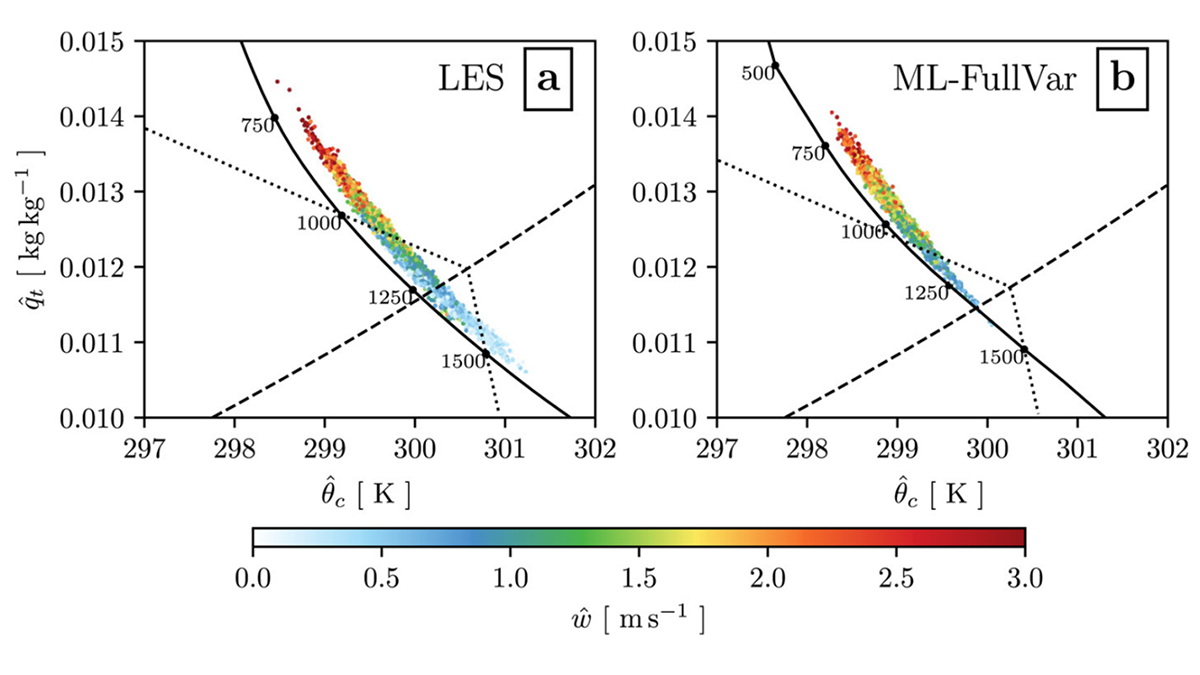Editors’ Highlights are summaries of recent papers by AGU’s journal editors.
Source: Journal of Advances in Modeling Earth Systems
The mixing between cumulus clouds and the nearby environment is one of the greatest sources of uncertainty in climate modeling. The air mass flux that crosses into a cloud is called “entrainment” and out of a cloud is called “detrainment”. Entrainment and detrainment rates are highly stochastic and complex functions of properties of cumulus clouds and the nearby environment.
Shin and Baik [2022] develop a stochastic mixing model using a machine learning (ML) technique that models the mixing process of convection. The authors found that the ML model predicts entrainment and detrainment rates better than previously proposed parameterizations, with the inputs of cloud and environment properties.
The single-column model simulations with the new mixing model produce realistic mean and variance of various shallow cumulus properties. The simulation results also suggest that most of the cloud variabilities are generated from the mixing process. This paper is an example of the cutting-edge integration of physical understanding and machine learning techniques.
Citation: Shin, J., & Baik, J.-J. (2022). Parameterization of stochastically entraining convection using machine learning technique. Journal of Advances in Modeling Earth Systems, 14, e2021MS002817. https://doi.org/10.1029/2021MS002817
—Jiwen Fan, Editor, Journal of Advances in Modeling Earth Systems

